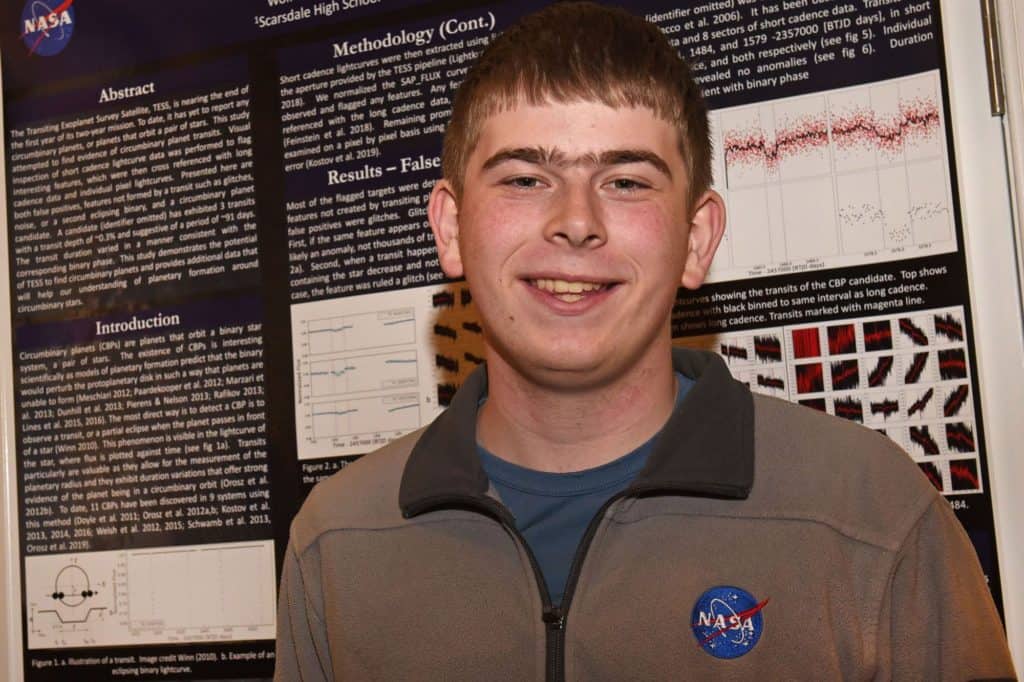
Wolf Cukier Makes Space Find During NASA Internship
In a special ceremony, the Westchester County Board of Legislators honored Scarsdale High School senior Wolf Cukier, a young scientist who discovered a previously unknown planet while working as a NASA summer intern.
Chairman Ben Boykin presented Wolf with proclamations both from the Board of Legislators and from County Executive George Latimer, hailing Wolf for his remarkable achievement.
Through his own initiative, Cukier earned a summer internship at NASA’s Goddard Space Flight Center in Maryland, securing a mentor while participating in the Science Research Program elective course.
During his second summer internship at Goddard, Wolf’s job was to examine data about the brightness of certain stars. He was looking at data from a system 1,300 light-years away and thought he might be looking at two stars circling each other. But Wolf realized that explanation didn’t make sense. In fact, it turns out, what he was looking at was a planet that NASA didn’t know existed until Wolf found it.
It’s the first planet anyone at NASA has ever found that has two suns.
NASA announced the discovery and featured it in a panel discussion at the American Astronomical Society meeting in Honolulu earlier this month – and Wolf is the co-author of a paper on the discovery, alongside scientists from Goddard, San Diego State University, the University of Chicago and other institutions.
The Board of Legislators declared Wednesday, Jan. 22 as Wolf Cukier Day in Westchester County.
The planet is currently known as TOI 1338b, but Wolf and his family hope it might ultimately be named “Wolftopia.”
In 2019, Cukier joined NASA’s Goddard Space Flight Center as a summer intern. His job was to examine variations in star brightness captured by NASA’s Transiting Exoplanet Survey Satellite and uploaded to the Planet Hunters TESS citizen science project.
“I was looking through the data for everything the volunteers had flagged as an eclipsing binary, a system where two stars circle around each other and from our view eclipse every each other every obbit,” said Cukier. “About three days into my internship, I saw a signal from a system call TOI 1338. At first I thought it was a stellar eclipse, but it turned out to be a planet,” said Cukier.





